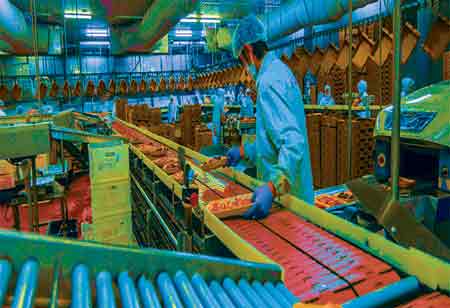Thank you for Subscribing to Food Business Review Weekly Brief
Bittersweet Battle: Navigating the Roadblocks in the Candy Industry
Rapidly evolving market trends, shifting consumer preferences, and heightened competition pose significant challenges to the candy industry.

By
Food Business Review | Monday, January 02, 2023
Stay ahead of the industry with exclusive feature stories on the top companies, expert insights and the latest news delivered straight to your inbox. Subscribe today.

The candy industry in 2023 confronts a multitude of challenges, spanning from a lack of innovation and sustainability concerns to health and wellness trends and fierce competition. Candy companies must adapt and innovate to thrive in this dynamic market.
Fremont, CA: Rapidly evolving market trends, shifting consumer preferences, and heightened competition pose significant challenges to the candy industry. Key issues faced by candy companies include:
Changing Consumer Habits:
Consumer habits are undergoing a transformation, with an increasing demand for healthier alternatives like low- or no-sugar candies. More than 40% of consumers now actively seek these alternatives while shopping. The quest for new flavors is evident, with companies introducing innovative options to cater to diverse preferences.
Cost of Raw Materials:
Rising costs of raw materials and ingredients, including corn syrup as a cheaper alternative to sugar, are impacting the industry. Adverse weather conditions, such as La Niña in Brazil and the Midwest, contribute to a steep rise in global corn prices.
Cost of Living:
Changes in consumer purchasing habits are not solely driven by sugar quantity and sustainability but also by pricing considerations. Consumers increasingly base their spending decisions on factors like necessity, sustainability, and pleasure. Products like candy and chocolate, falling into the "pleasure" category, may face financial challenges as consumers experience increasing financial pressure.
Loss of Production:
Production processes, particularly for liquid products like sugar syrups or liquid caramel, often result in leftover product at the end of a batch. The removal of this product from the production line can generate a significant amount of waste. Implementing hygienic and sanitary pipeline product recovery, such as pigging, proves effective in reducing waste and expediting cleaning-in-place (CIP) procedures.
Maintaining Food Safety and Quality:
The expectation for a high standard of food production is prevalent in the food industry. Clean pipelines and reduced cross-contamination risks are vital for consumer safety and brand reputation. As over 60 percent of consumers have heightened their awareness of food safety due to the COVID-19 pandemic, manufacturers must prioritize measures to ensure food safety and quality.






